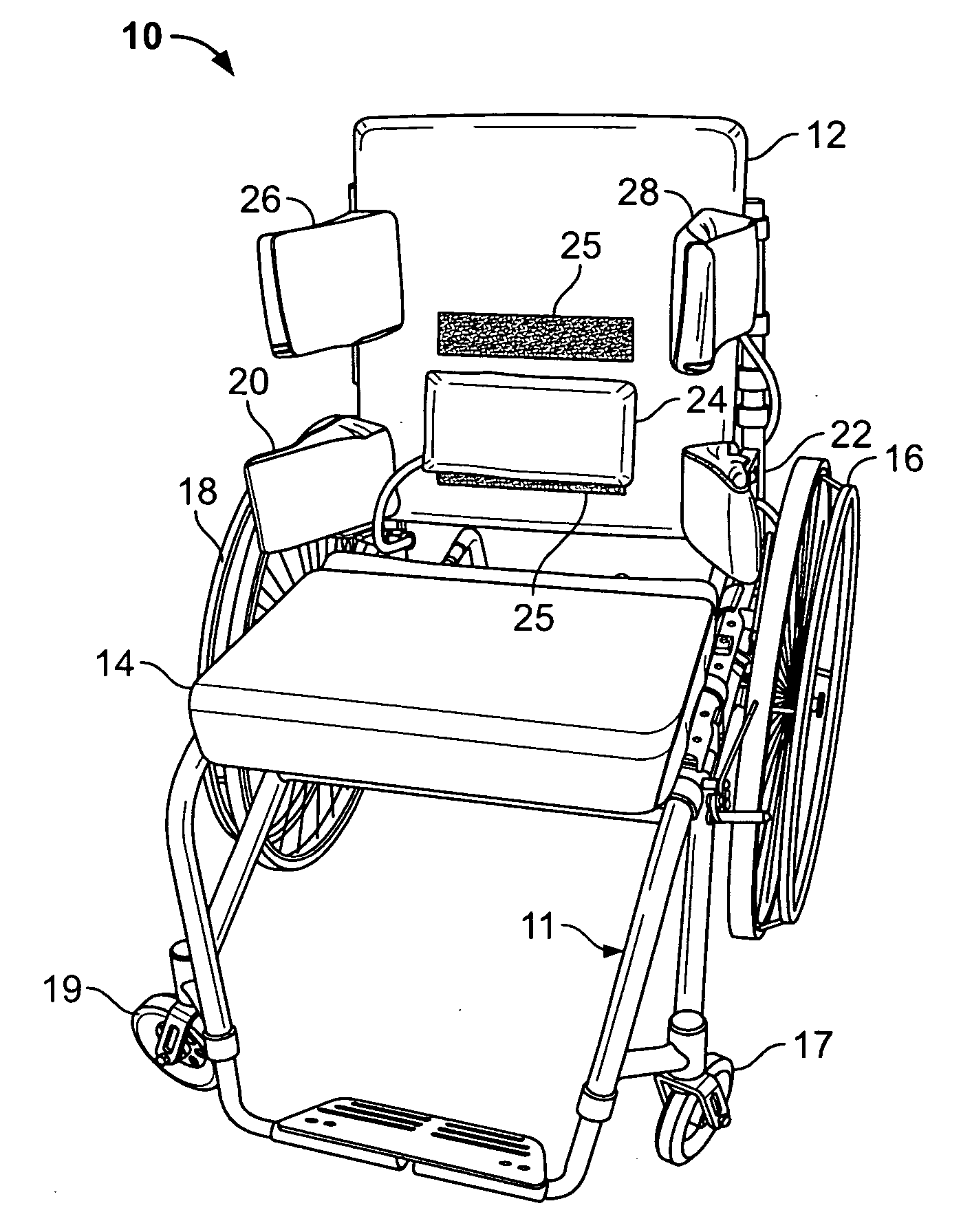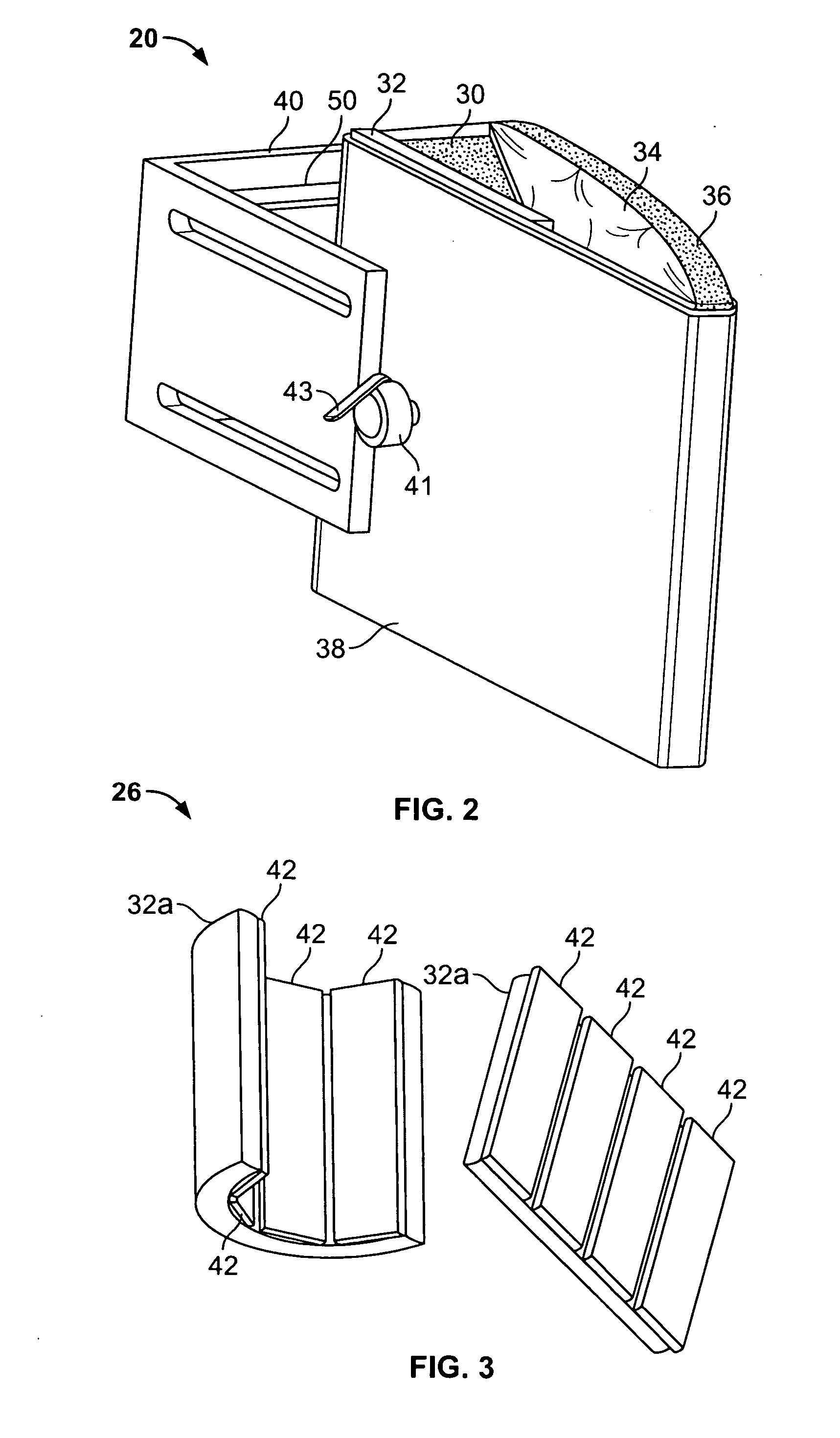Pneumatic support system for a wheelchair
a technology for supporting systems and wheelchairs, which is applied in the direction of wheelchairs, pedestrian/occupant safety arrangements, vehicular safety arrangements, etc., can solve the problems of imposing high loads on the abdominal cavity, restricting the movement of users, and complex requirements for wheelchair seating
- Summary
- Abstract
- Description
- Claims
- Application Information
AI Technical Summary
Benefits of technology
Problems solved by technology
Method used
Image
Examples
Embodiment Construction
[0026] The invention is generally directed to a wheelchair with a pneumatic support system. In various embodiments of the invention, the system is a comprehensive supporting system for wheelchair seating. Significantly, users of the system are able to both achieve postural stability and maintain functional independence. An embodiment of the invention includes bilateral postero-lateral pelvic support units, a lumbo-sacral support unit, and bilateral lateral thoracic support units. The postero-lateral pelvic support units establish a stable, midline orientation of the pelvis, maximizing upper extremity function. The lumbo-sacral support unit allows correction of pelvic tilt in the anterior / posterior plane. The lateral thoracic support units provide maximal trunk stability without compromising upper extremity functional tasks. Unlike conventional support systems, the support system described herein is user-adjustable through a simple control device, which not only allows individual cus...
PUM
 Login to View More
Login to View More Abstract
Description
Claims
Application Information
 Login to View More
Login to View More - R&D
- Intellectual Property
- Life Sciences
- Materials
- Tech Scout
- Unparalleled Data Quality
- Higher Quality Content
- 60% Fewer Hallucinations
Browse by: Latest US Patents, China's latest patents, Technical Efficacy Thesaurus, Application Domain, Technology Topic, Popular Technical Reports.
© 2025 PatSnap. All rights reserved.Legal|Privacy policy|Modern Slavery Act Transparency Statement|Sitemap|About US| Contact US: help@patsnap.com



